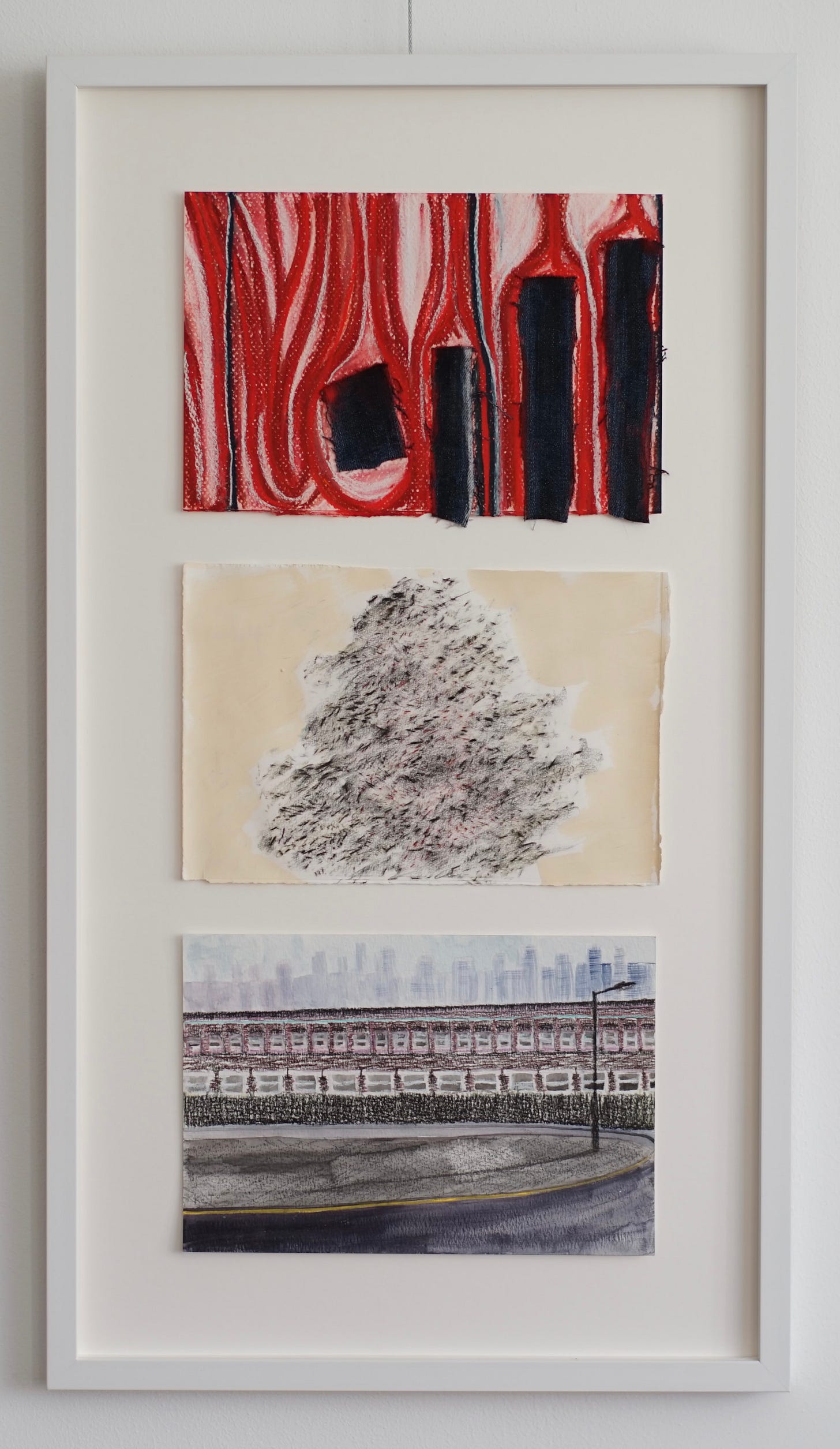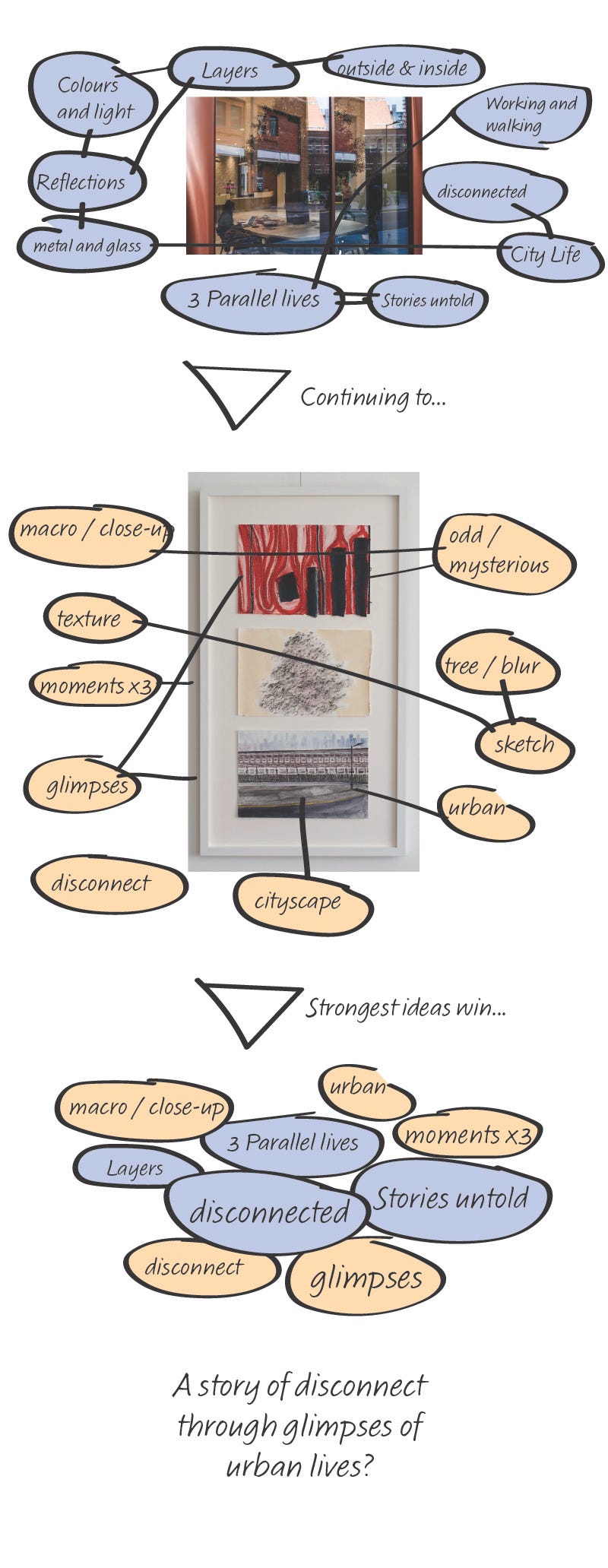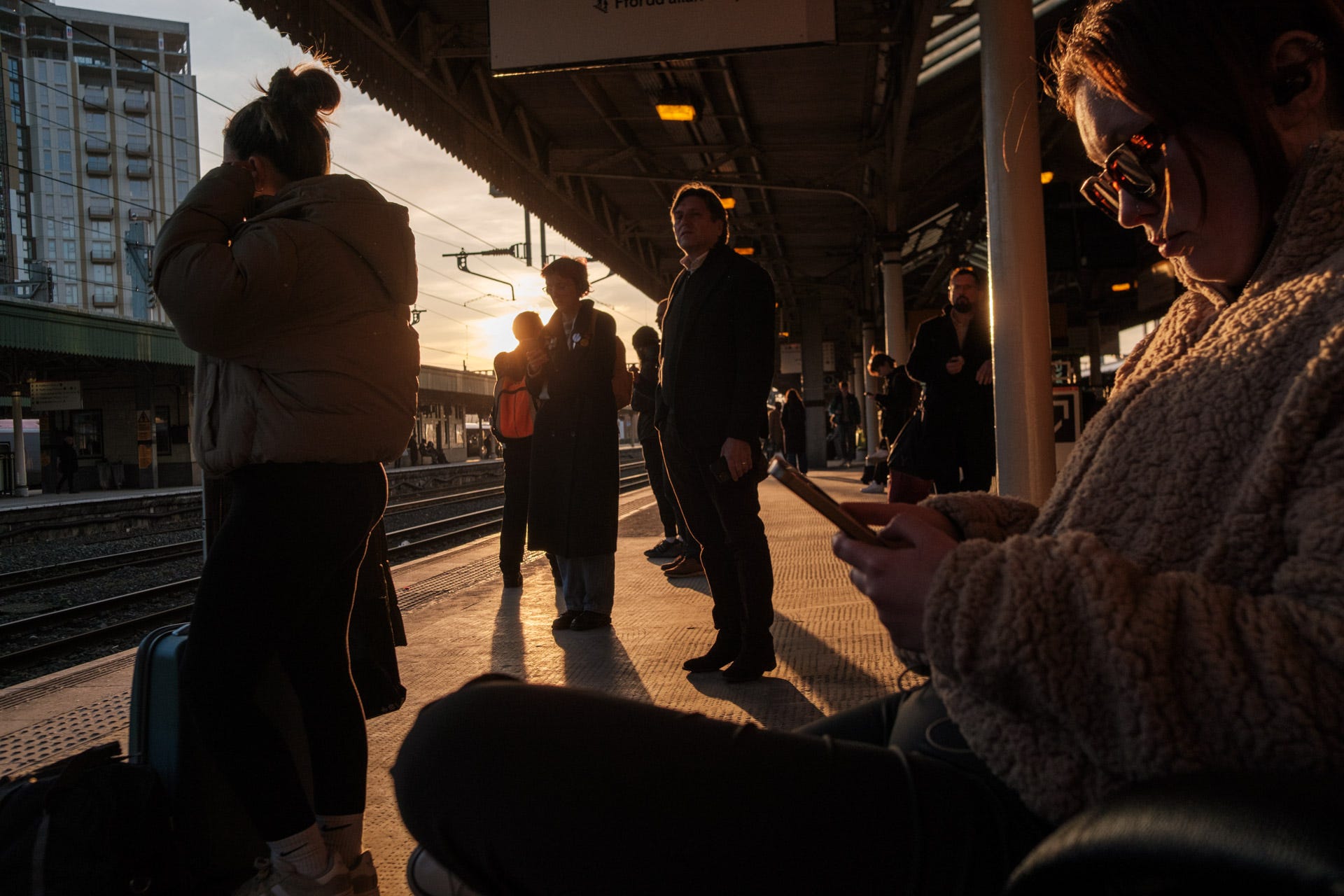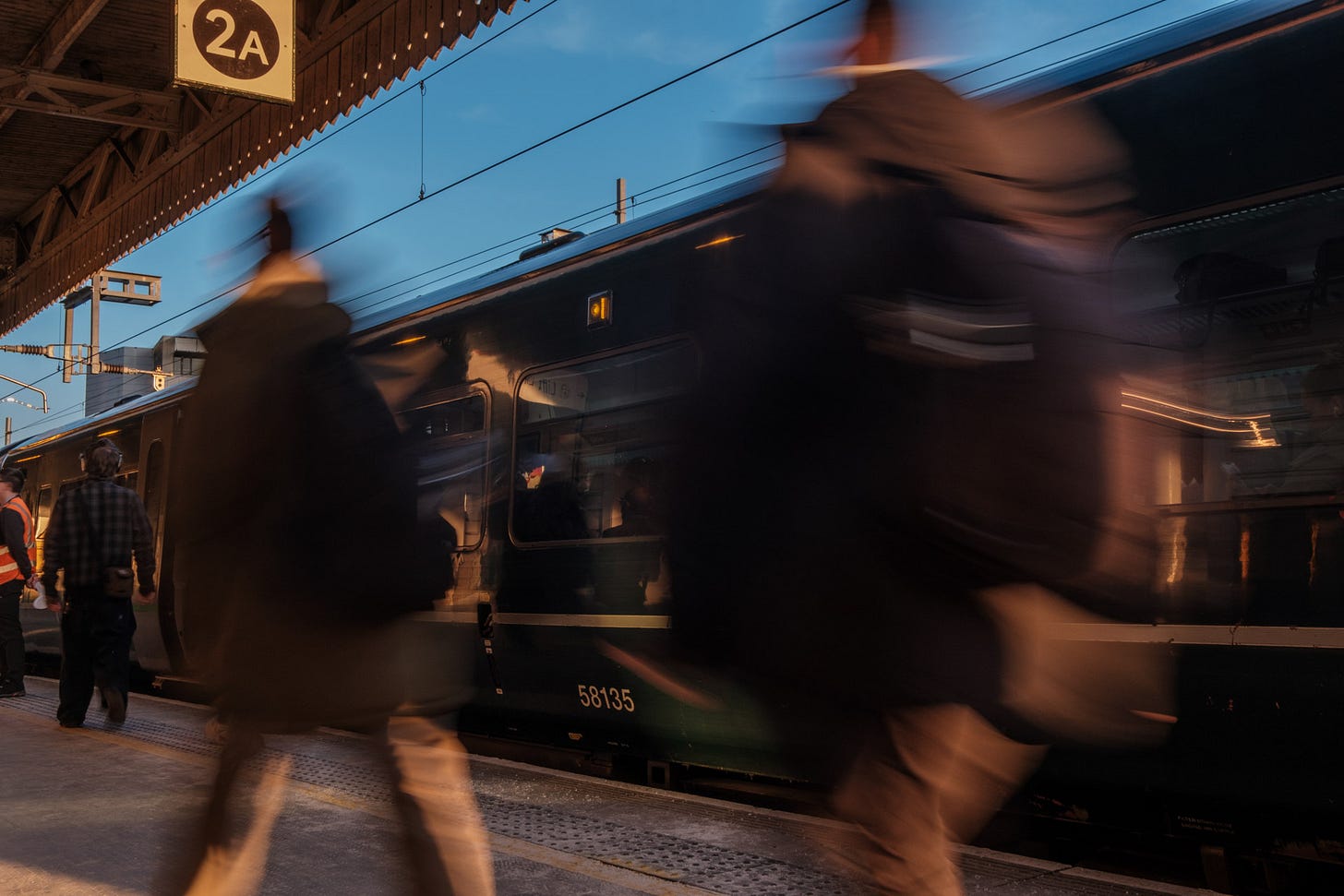Because of my experience in marketing and branding, and my very visual thinking process (what a surprise!) I tend to take a mindmap-y, iterative approach to developing ideas. As my collaboration with Karen Topp for the Inflection project continues, it’s been a little intimidating to take the next step in the series we are developing. So I have been exploring, step by step, what my response should be. Something daunting like responding to another artist's work, staring at a blank canvas or page, feels off-putting, even impossible. But with a simple process, it's possible to write your own brief that feels authentic and I hope, work for this project.
Blank canvas syndrome is a challenge many creatives face. Whether you're a photographer, writer, artist, or even chef, the sheer openness of a new project can be overwhelming. But I think approaching the creative process with structure, trying to leave your assumptions and preconceptions at the door — just as I have often done in developing a new brand or marketing campaign — you can shift from uncertainty to clarity. In this week’s substack, I'll share my process, applying it to Inflection and showing how you can use it for your own work.
It doesn’t really matter what tools or software you use, because usually a notepad is enough, and as the most spontaneous of all tools, the best option.
Step 1: Thinking Laterally — Brainstorming and Association
The first step is generating ideas without judgment. At this stage, lateral thinking and associative brainstorming are invaluable tools. Rather than starting with an outcome in mind, the goal is to allow free exploration of possibilities.
Most often I use one – or a combination of several – of these systems:
Freewriting: Letting my thoughts spill onto the page without worrying about coherence. Jotting down concepts, associations - whether cultural, personal or even political, it doesn’t matter.
Mind mapping: Connecting words, ideas, and concepts that feel related to the project ideas. Literally drawing connections! Also circling groups of ideas on a page starts to identify themes.
Reverse engineering: Thinking about what emotions or responses I want to evoke and working backward.
Channelling your ancestors for inspiration: only kidding
Different artists across disciplines have often used this type of approach. Merce Cunningham used chance operations to shape his choreography, and Carmen Herrera refined her minimalist work through a disciplined sketching process. This allows ideas to emerge naturally before narrowing them down.
Part 2: Applying It to the Inflection Project
For Inflection, my collaboration with Karen Topp, I was uncertain what I thought my response should be, so I started simply with what I thought her work provoked, and built from there. For context you may want to look at my original image which Karen responded to via the link here.
Brainstorming freely: I noted down words and phrases that came to mind when I looked at her work—movement, transition, shift, balance, uncertainty.
Finding patterns: I stepped back to see what themes, ideas or prompts were recurring or connected.
Developing a narrative: I imagined my response as a response to Karen’s work, where my images could reflect, contrast, or extend the ideas present. Most of all I wanted a sense of storytelling to emerge. After all our idea is to exhibit these all together, in sequence, after the year long project concludes.
Part 3: How You Can Use This Process in Your Creative Projects
If you’re facing the challenge of a blank canvas, you can apply the same structured yet open-ended approach to developing your own personal brief to a project you’re unsure of, or can’t find a starting point.
Start with instinctive exploration. Give yourself permission to generate ideas freely. Use freewriting, mind maps, or mood boards to explore possible directions.
Look for connections. Step back and identify patterns in what you’ve created. What themes emerge? What resonates most? Can you literally draw lines between the different ideas, or group them together?
Frame a brief with incentives to start. Summarise your findings, think about what would motivate you or excite you to take the next step with. Maybe you can combine it with something you’ve long wanted to do – try film photography, work with someone or in a location you want to explore.
Test your direction. Start experimenting. No judgement.
By combining connected ideas with motivational ideas, you’ll create something that’s unique to you but also pushes you to develop in new areas or new subjects.
Conclusion
Creativity doesn’t have to start from a place of fear or paralysis. Whether responding to another artist’s work, beginning a new photography series, or tackling a writing project, the process of structured exploration can help you find your own unique perspective.
Through brainstorming, association, and developing a personal brief, you transform the unknown into something exciting. This approach has shaped my response to Inflection, and I hope it offers a useful framework for your own creative practice.
Now, I’d love to hear from you: How do you approach a blank canvas? Drop a comment or share your process!
Keep Curious
James
Contre-jour
It’s just so tempting to take advantage of the golden hour when the sun gets really low late in the day, and everyone – and everything – looks, well, golden. Shadows get longer, contrast higher and when it’s a little warmer and a little sunnier than usual, the world seems a little better all around. I think we all need a bit of that at the moment.
Anyway, below are a few pics taken whilst changing trains in Cardiff last week. I hope you enjoy them.











This is so helpful. Thank you.
Thank you for sharing James. What a fantastic insight into your approach, showing that there is an important place for analytical thinking in the creative process. Can't wait to see your next stab!